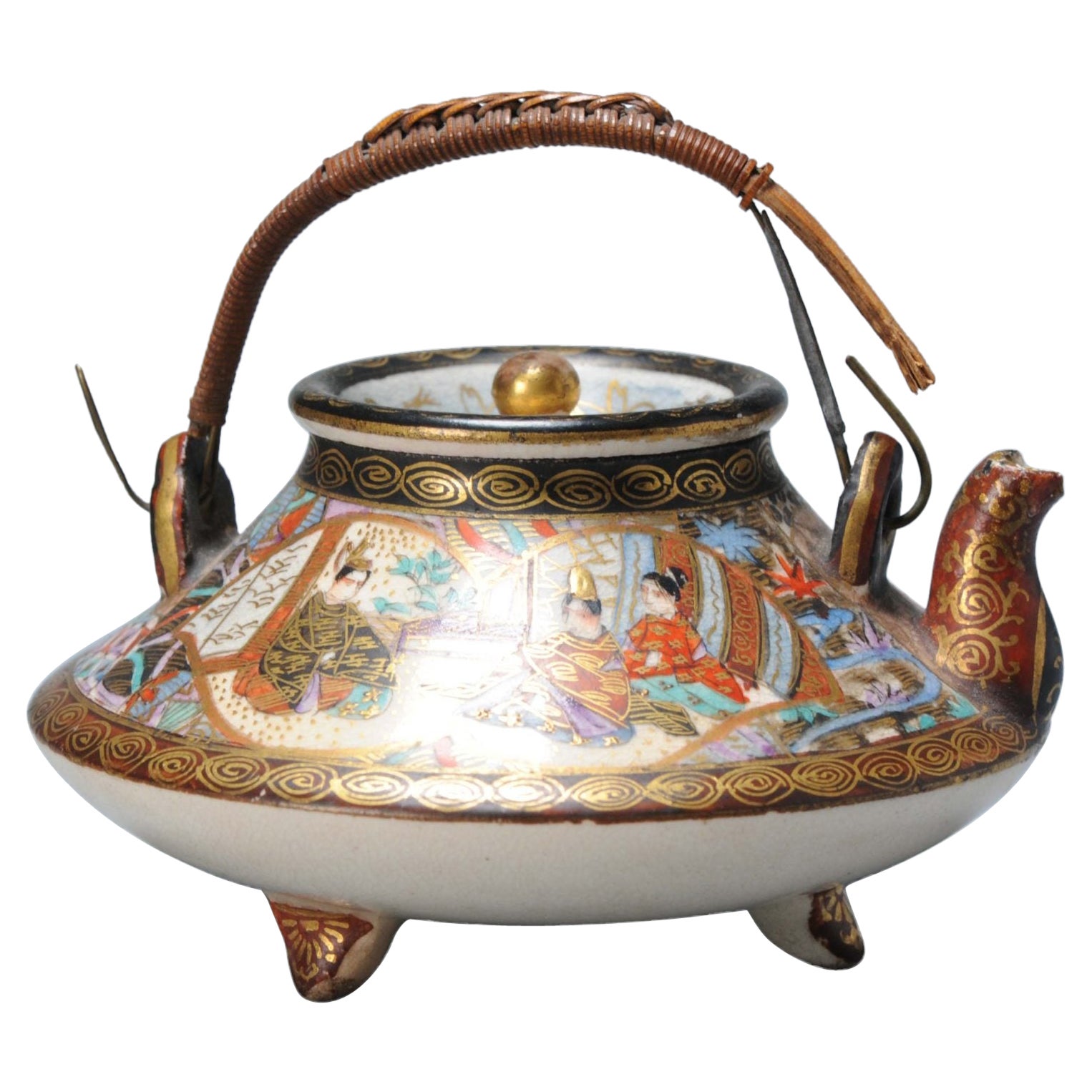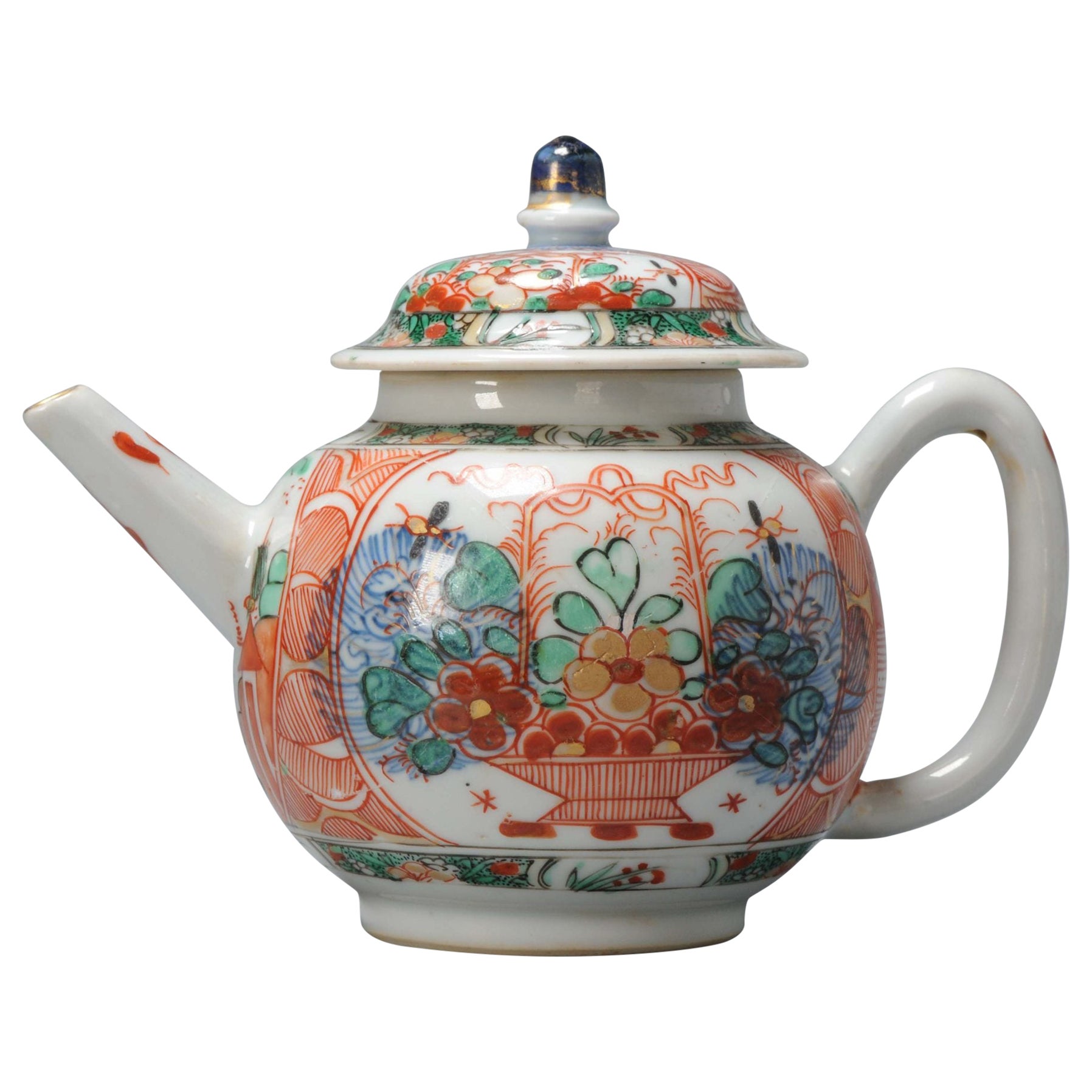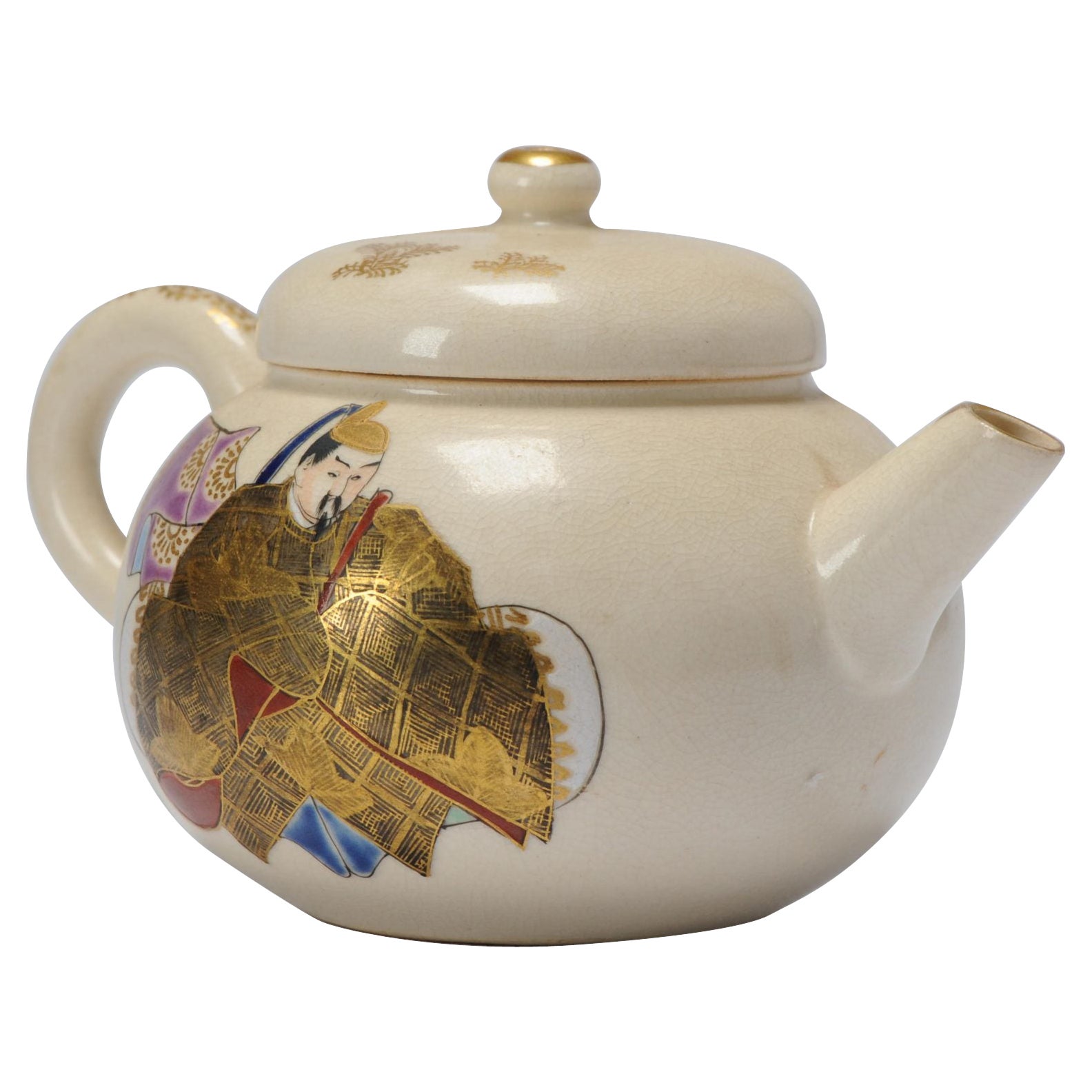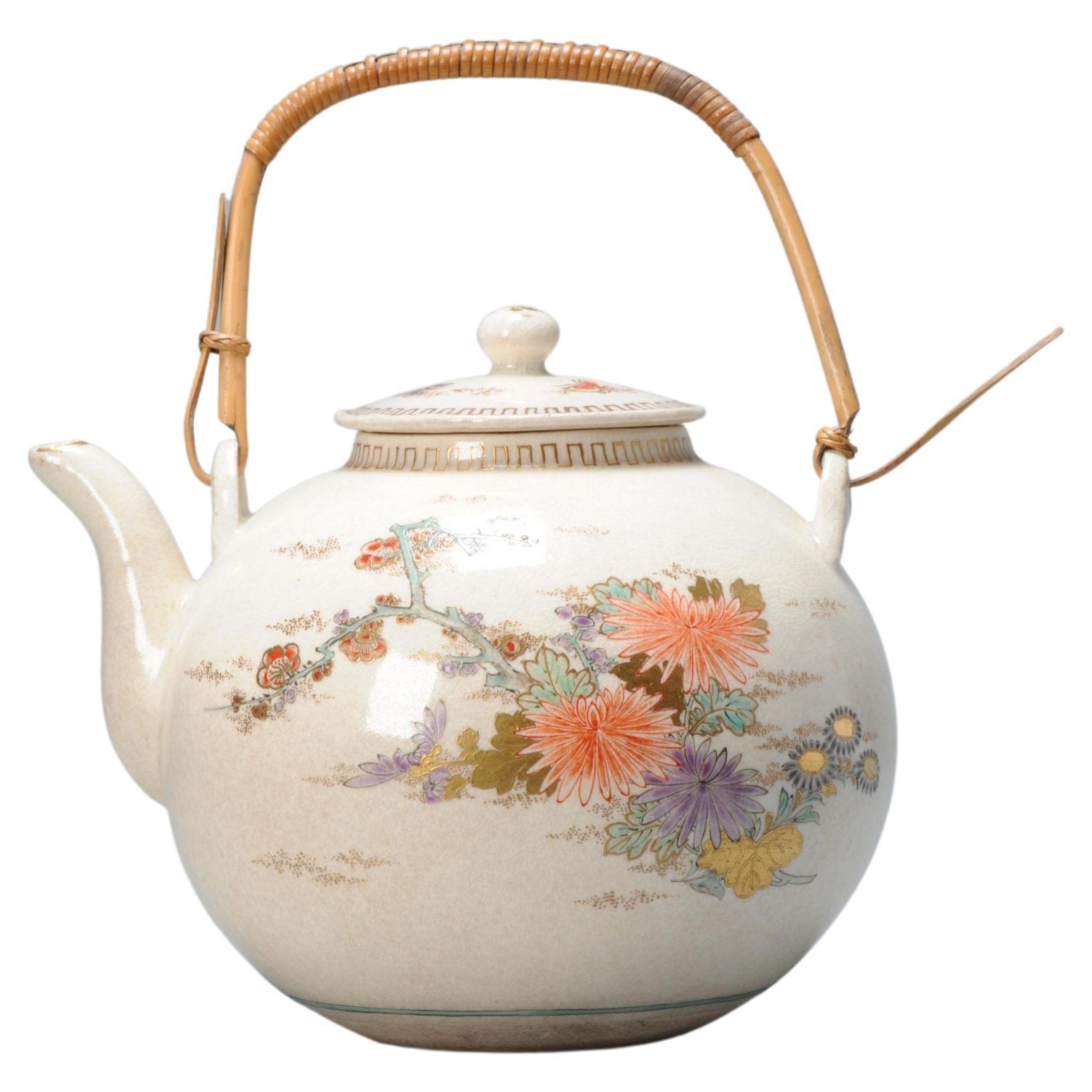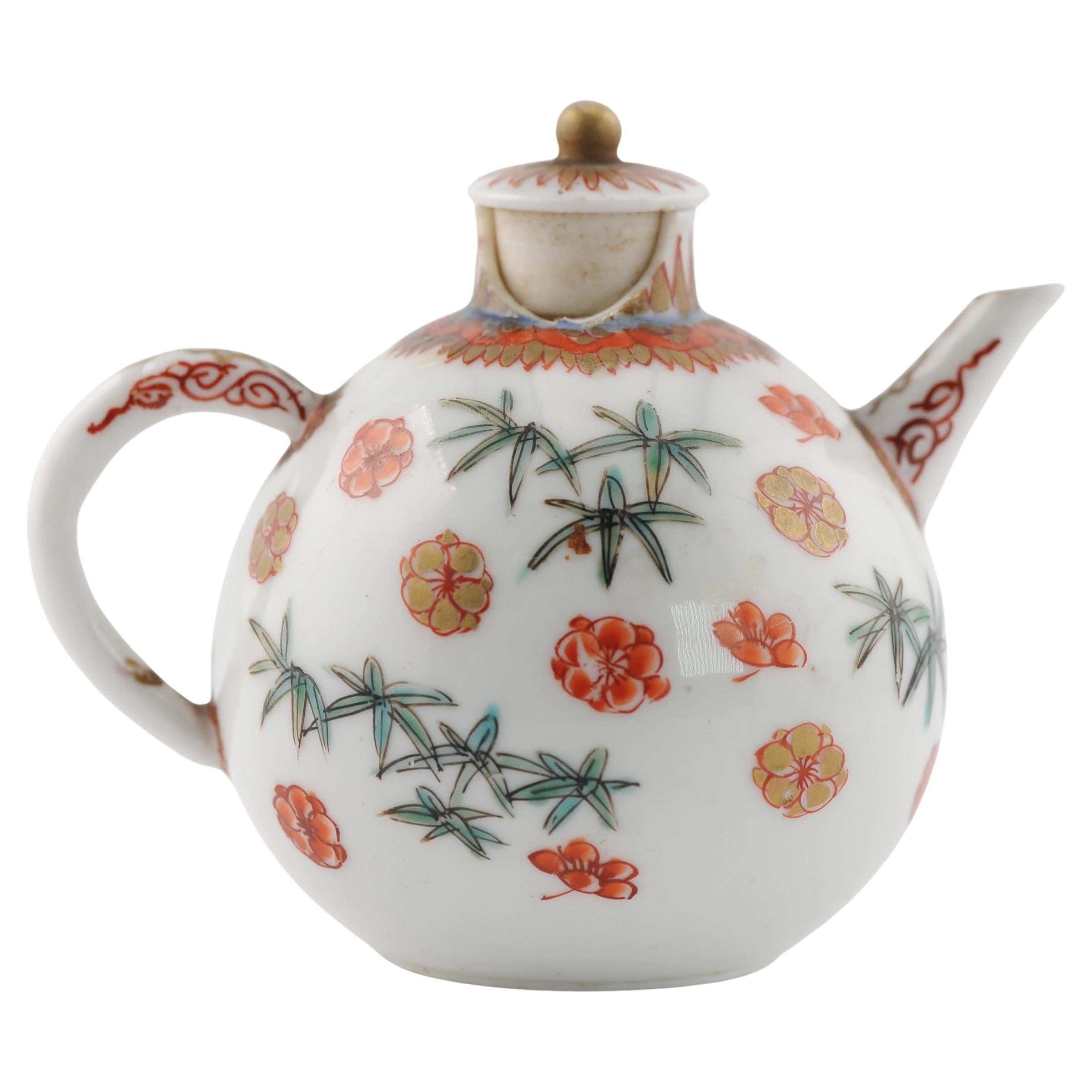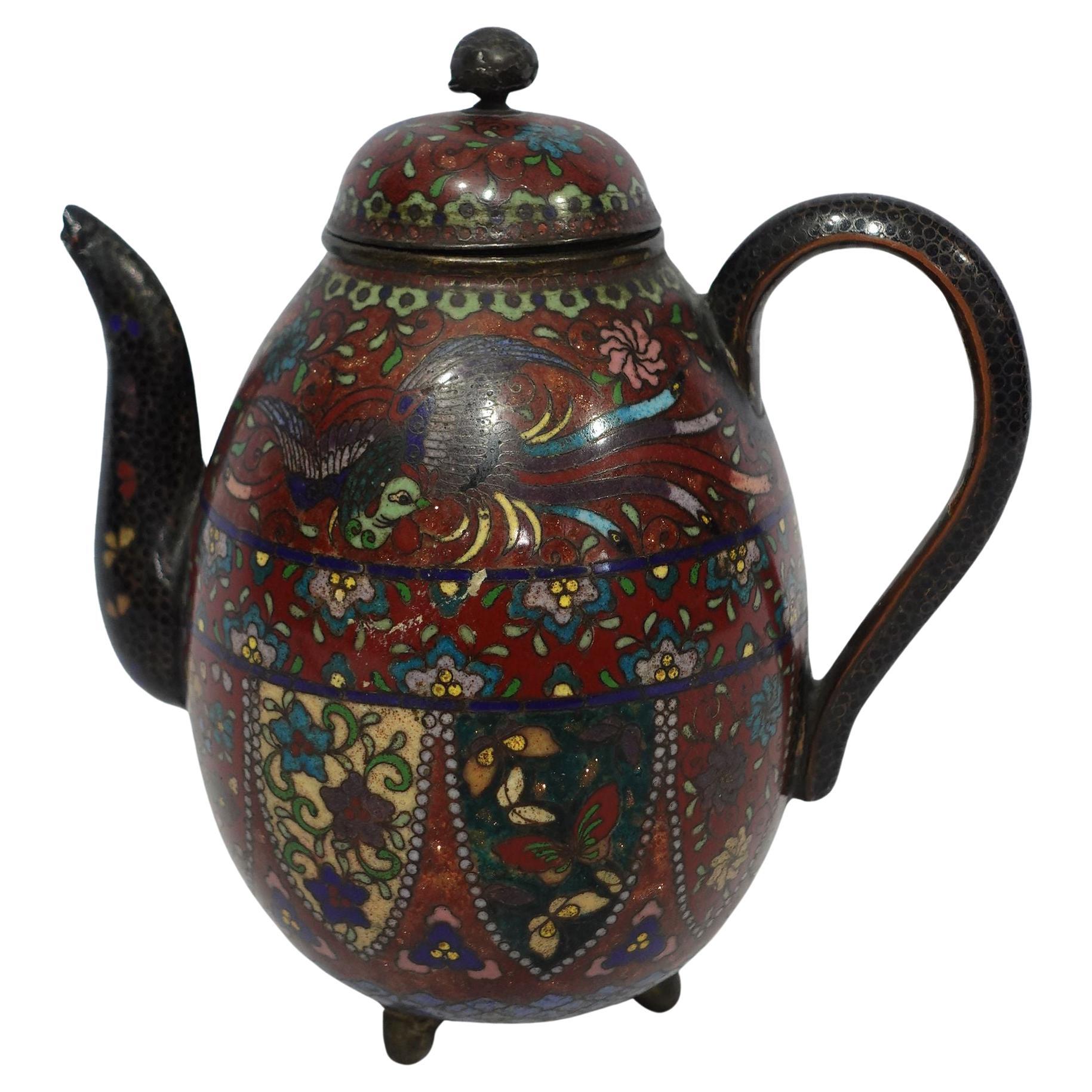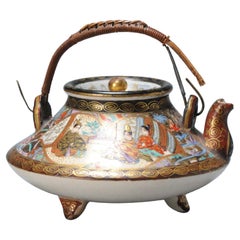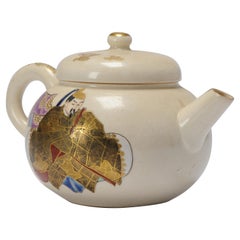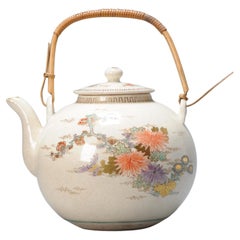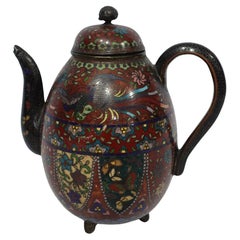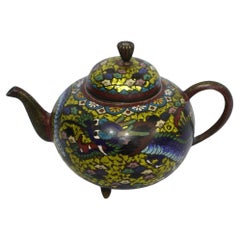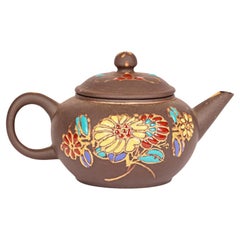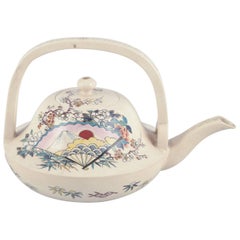Items Similar to Antique ca 1900 Japanese Satsuma Taizan Teapot Richly Decorated Marked
Want more images or videos?
Request additional images or videos from the seller
1 of 20
Antique ca 1900 Japanese Satsuma Taizan Teapot Richly Decorated Marked
$1,601.97
$2,002.4620% Off
£1,199.12
£1,498.9020% Off
€1,358.40
€1,69820% Off
CA$2,204.77
CA$2,755.9620% Off
A$2,457.45
A$3,071.8120% Off
CHF 1,289.34
CHF 1,611.6720% Off
MX$30,009.42
MX$37,511.7820% Off
NOK 16,325.82
NOK 20,407.2720% Off
SEK 15,430.38
SEK 19,287.9820% Off
DKK 10,341.10
DKK 12,926.3720% Off
About the Item
Japanese Satsuma vase, Meiji period
of ovoid form with slightly domed cover, decorated with monkeys in robes frolicking in a landscape beside a river.
Condition
Overall Condition Jar perfect. Lid with has a large line all over the diameter. It is not visible fully on the inside (walls). Size 115mm high
Period
Meiji Period (1867-1912).
- Dimensions:Height: 2.37 in (6 cm)Diameter: 5.91 in (15 cm)
- Style:Meiji (Of the Period)
- Materials and Techniques:
- Place of Origin:
- Period:
- Date of Manufacture:19th Century
- Condition:Overall Condition Jar perfect. Lid with has a large line all over the diameter. It sis not visible fully on the inside (walls).
- Seller Location:Amsterdam, NL
- Reference Number:Seller: 1330917030031stDibs: LU4863228085192
About the Seller
5.0
Platinum Seller
Premium sellers with a 4.7+ rating and 24-hour response times
Established in 2015
1stDibs seller since 2019
264 sales on 1stDibs
Typical response time: 2 hours
- ShippingRetrieving quote...Shipping from: Amsterdam, Netherlands
- Return Policy
Authenticity Guarantee
In the unlikely event there’s an issue with an item’s authenticity, contact us within 1 year for a full refund. DetailsMoney-Back Guarantee
If your item is not as described, is damaged in transit, or does not arrive, contact us within 7 days for a full refund. Details24-Hour Cancellation
You have a 24-hour grace period in which to reconsider your purchase, with no questions asked.Vetted Professional Sellers
Our world-class sellers must adhere to strict standards for service and quality, maintaining the integrity of our listings.Price-Match Guarantee
If you find that a seller listed the same item for a lower price elsewhere, we’ll match it.Trusted Global Delivery
Our best-in-class carrier network provides specialized shipping options worldwide, including custom delivery.More From This Seller
View AllAntique Meiji Period Japanese Satsuma Tea Pot Japan, 19th Century
Located in Amsterdam, Noord Holland
Faboulous japanese earthenware Teapot of unusual shape.
Additional information:
Material: Porcelain & Pottery
Type: Tea/Coffee Drinking: Bowls, Cups & Teapots
Japanese Style: Satsum...
Category
Antique 19th Century Japanese Tea Sets
Materials
Porcelain
$837 Sale Price
20% Off
Antique Chinese Teapot Kangxi/Yongzheng Imari Amsterdam Bont Qing
Located in Amsterdam, Noord Holland
A very nicely decorated Kangxi or Yongzheng Teapot. Rare teapot in the family of Amsterdam Bont. Dating to 1st half of the 18th century
Amsterdams Bont
A relatively unknown niche of Chinese porcelain from ca 1680-1740 that was partly decorated in Europe. Because mainstream Chinese collectors have yet to discover the historical significance of these wares they are relatively easy to find in Holland. While also being highly interesting and of often super quality and with an amazing array of decorations. Amsterdams Bont is a name given to porcelain partly decorated in the Netherlands (most likely in cities like Delft, Haarlem, Makkum). Because Amsterdam was at this moment in time the trade centre of the western world and also of the porcelain trade a lot of this over enamelling was probably commissioned by Amsterdam merchants, to reap higher profits on otherwise boring Chinese wares. The name Amsterdam Bont probably derives from the fact that these type of decorated ware was sold by Amsterdam Merchants. Amsterdam Bont consists of either blanc or under glaze blue decorated Chinese porcelain...
Category
Antique 18th Century Chinese Tea Sets
Materials
Porcelain
$1,518 Sale Price
20% Off
Antique Signed Satsuma Teapot Fujiware no Teika, Late 19th/Early 20th Century
Located in Amsterdam, Noord Holland
A lovely Satsuma Teapot. Marked on body and lid + pot rims. So, the teapot depicts the author Fujiwara no Teika (the text to the right reads, "Counselor...
Category
Antique Late 19th Century Japanese Tea Sets
Materials
Porcelain
$718 Sale Price
20% Off
Antique Meiji Period Satsuma Teapot Flowers Butterflies, Late 19th/Early 20th
Located in Amsterdam, Noord Holland
A lovely Satsuma Teapot.
Additional information:
Material: Porcelain & Pottery
Japanese Style: Satsuma
Region of Origin: Japan
Period: 19th century, 20...
Category
Antique Late 19th Century Japanese Meiji Tea Sets
Materials
Porcelain
$862 Sale Price
20% Off
Miniature Antique Edo Period Early 18th Century Japanese Porcelain Teapot
Located in Amsterdam, Noord Holland
Description
Miniature Teapot.
Sharing with you this lovely and small sized teapot from the early 18th century. The shape and design are lovely and unusual. The base is unglazed.
See...
Category
Antique 17th Century Edo Decorative Dishes and Vide-Poche
Materials
Porcelain
Exquisite Japanese Satsuma Tea or Milk Pot Marked Base Bird Rare, 19th Century
Located in Amsterdam, Noord Holland
Epical Piece.The painting work is cool.
Additional information:
Material: Porcelain & Pottery
Region of Origin: China
Period: Meiji Period
Original/Reproduction: Original
Age: 1800-...
Category
Antique 19th Century Chinese Tea Sets
Materials
Porcelain
$711 Sale Price
20% Off
You May Also Like
Antique Japanese Cloisonné Meiji Period Teapot Footed CO#03
Located in Norton, MA
Quality work, amazing workmanship with absolutely fine details bronze cloisonné enameled teapot depicting the scene of a flying bird and lots of details of floral and patterns with v...
Category
Antique 19th Century Chinese Metalwork
Materials
Bronze, Copper
Antique Japanese Cloisonné Meiji Period Dragon Footed Teapot CO#04
Located in Norton, MA
Quality work, amazing workmanship with absolutely fine details bronze cloisonné enameled teapot depicting the scene of a flying dragon with vivid colors of yellow, light golden green...
Category
Antique 19th Century Chinese Metalwork
Materials
Copper, Bronze
Chinese Miniature Yixing Teapot with Applied Floral Enamel Designs
Located in Bishop's Stortford, Hertfordshire
A fine vintage Chinese miniature teapot hand applied with enamel floral designs dating from the mid 20th century. The lightly potted teapot is of squat rounded shape with a loop hand...
Category
20th Century Chinese Other Ceramics
Materials
Pottery
Satsuma, Imperial Japan. Miniature teapot in earthenware. Approx. 1870s
Located in København, Copenhagen
Pre-owned goods are exempt from import duties for U.S. customers.
Therefore, no import tariffs will be applicable to your purchase.
Satsuma, Imperial Japan.
Miniature teapot in ear...
Category
Antique 1870s Japanese Tableware
Materials
Earthenware
Japanese Satsuma Miniature Tripod Teapot and Cover, Meiji Period
Located in Delft, NL
Japanese Satsuma miniature tripod teapot and cover, Meiji period
A circular flattened form miniature teapot with cover painted in enamels and gilt...
Category
Antique Late 19th Century Japanese Antiquities
Materials
Earthenware
Japanese TeaPot Kyoyaki Seifu 1960s Karabito
Located in Paris, FR
This is a tea pot which was made around 1960 in showa era. The style is called Kyo yaki Seifu Yohei. It is from Kyoto prefecture.
This style was made by a potter artiste Seifu Yohei....
Category
Vintage 1960s Japanese Showa Serving Pieces
Materials
Porcelain
More Ways To Browse
19th Century Teapot
Japanese Lidded Jar
Japanese Satsuma Vases
Large Japanese Jars
Japanese Jar Large
Porcelain Japanese 1900
Large Teapots
Teapot Japan
Japanese Monkey
Monkey Japan
Antique Japanese Teapots
Satsuma Large Vases
Japanese Satsuma Large Vase
Monkey Vase
Antique Porcelain Monkey
1900 Satsuma Vases
Satsuma Jar
Satsuma Teapot
